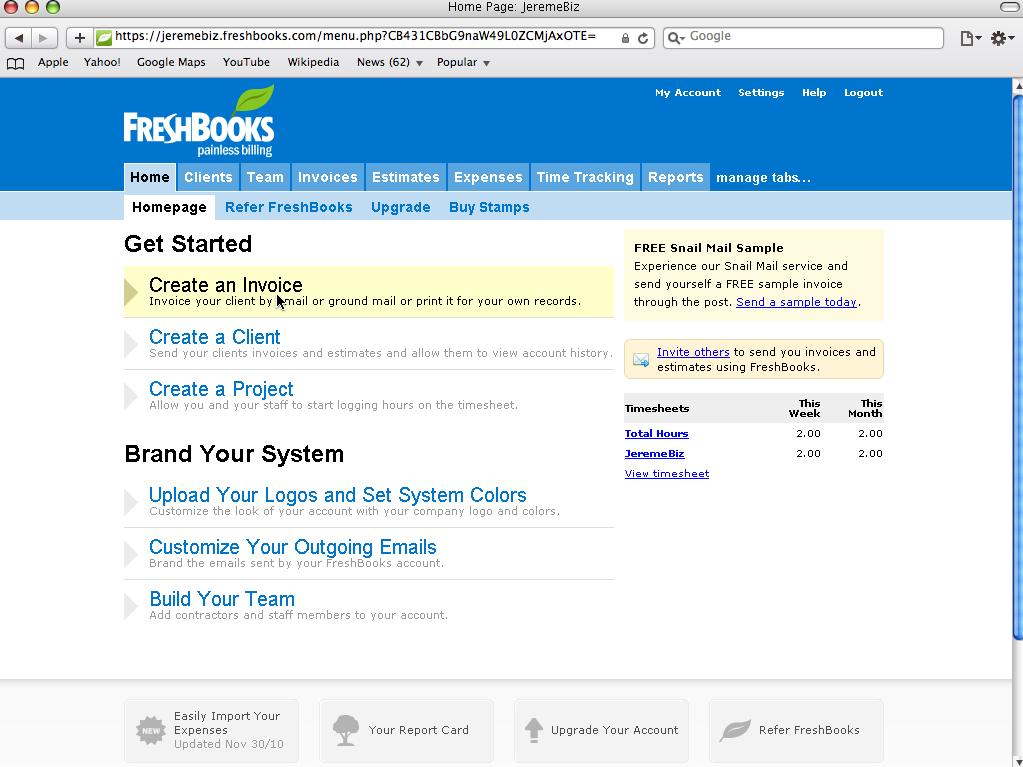Timesheet Feature Review #8: Remote or Web Access
In today’s modern world, technology has made it possible to work remotely from anywhere and at any time. It’s no wonder then that so many office products are web-based, allowing users to log on at any moment and do work from wherever they are. Being able to work remotely has its advantages; chief among those is the increase in productivity enjoyed by employers who allow their employees to telecommute.
To help cater to the increasing number of employees who work remotely, timesheet developers have also adapted their products to allow remote/web access. Many of the timesheet products available on the market today operate from websites that allow users to log on at any time to access the timesheet system. But how useful is a web-based timesheet product exactly? And why is being able to remotely access their timesheets so attractive to timesheet users, making it one of the top must-have features?
The Art of Flexibility: Timesheets Whenever and Wherever You Want Them
Isn’t the internet wonderful? The ability to connect people from all across the world through the web is an amazing technology. To regular timesheet users, this means being able to access the timesheet system whenever they need it. With the increase in telecommuting, the need to track time spent outside the office has grown tremendously.
With web access for timesheets, employees are able to work remotely and key in their time immediately without delay. This provides both convenience and accuracy as time is entered immediately and the employee does not have to work back from memory.
Companies that employ web-based timesheet products also benefit in a different way – various branches of multi-national corporations will be able to work together on the same timesheet system; contractors can be hired from all over the world and international clients can be granted access into the timesheet system to review the projects relevant to them.
The key idea behind web access is flexibility. Employees have the option to only do work from their offices or they can also take their work with them on-the-go. Either way, a web-based approach is able to cater effectively to both groups. Web access brings time tracking into the 21st century and with it, all the perks and conveniences of the internet are also incorporated into the system.

e.g. Web Access of Easy Time Tracking (www.easytimetracking.net)

e.g. Accessing Freshbooks From A Web Browser (www.freshbooks.com)
So What’s the Downside?
There’s always one important vulnerability with any web-based application: Downtime. Web systems are prone to crashing, servers can be overloaded by sudden spikes in traffic; any number of things can go wrong with the website. Thankfully, the best timesheet products are hosted on safe and secure servers to minimize the chances of downtime. Perhaps more likely is some interruption to your internet connection, that prevents you from working on a purely web-based system until it is restored. So, although unlikely, the possibility of your timesheet system crashing around you is still something that you will have to deal with should you opt for a web-based product.
There’s also a more insidious threat to web-based timesheet products. Companies that use web-based timesheet products should be wary of hackers and illegal access to their data. Although timesheet products are usually hosted on encrypted servers, caution is still advised when uploading any top-secret information into your web-based software product.
So What Does This All Mean?
To sum up, web access is the ability to log into your timesheet system through a web browser. This is the most common form of remote access although other methods such as downloading a software client also exist. Web/remote access allows users to track their time spent working outside of the regular office. This offers an advantage over entering the time at a later time as users do not have to rely on their memory, which might be inaccurate. Finally, web/remote access also allows users from all over the world to log their time into the same timesheet system. This allows time tracking across various departments in multi-national companies as well as for international contractors to log their time.
Whether or not you prefer a web-based solution, there’s no denying the usefulness of incorporating the utility of the internet into time tracking solutions. The key difference between web-based and software-based timesheet products lies between utility and reliability. Software-based timesheet products will probably not suffer from the security issues of web-based solutions. Because all the information is stored securely in the office intranet, the chances of a hacker gaining access is arguably smaller than with web-based timesheets.
However, if you’re willing to trade-off the remote possibility of downtime and hackers for the amazing usability of a web-based product, then web-based timesheet products will put you heads and shoulders above software-based users.
Have Your Say
Now that you have a better idea of the perks and possible downsides of web-based timesheet products, why not leave us a comment telling us which system you prefer?
As it stands, web access is a very common feature amongst timesheet products. Of the 21 timesheets reviewed by Software Shortlist, all of them featured web/remote access as either a basic feature or as an optional add-on. It’s no wonder then that web/remote access is within the top “must have” timesheet features as suggested by Software Shortlist’s search data! Web/remote access comes in at a respectable #8 out of the top 13 features deemed as “must have” by timesheet users. Do you agree with this rating? Drop us a comment to tell us how you feel about the ranking of our top 13 features.
Also, stay tuned for more reviews on “must have” features as Software Shortlist continues its countdown!
